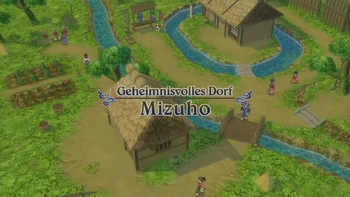Interpretation
of the Holy Scriptures in Protestantism is a mess. One group or person claims a passage means
one thing, while others see a different meaning and separate from the
aforementioned. It has been like this
since the Protestant Reformation began.
A fine ensample of this mindset in action deals with the so-called
Apocryphal books (which the Orthodox accept as fully canonical).
Notably, the Geneva
Bible was the first to produce an English Old Testament translation entirely
from the Hebrew text. Like its predecessors, it included the Apocrypha. In
fact, the King James Bible of 1611 also incorporated the Apocrypha, including
the Story of Susanna, the History of the Destruction of Bel and the Dragon
(both additions to Daniel), and the Prayer of Manasseh.
In short, none of the
major Bible translations that emerged during the German, Swiss, or English
reformations produced a Bible of simply 66 books. It is true that beyond the 66
books the other 7 (or more) were viewed as deuterocanonical, hence the term apocrypha,
but nonetheless, they were still seen as having some authority.
So when and where
does the Protestant Bible of 66 books show up? This practice was not
standardized until 1825 when the British and Foreign Bible Society, in essence,
threw down the gauntlet and said, “These 66 books and no others.” But this was
not the Bible of Luther, Calvin, Knox, or even the Wesleys, who used the
Authorized Version. Protestants had long treated the extra books as, at best,
deuterocanonical. Some had even called them non-canonical, and there were some
precedents for printing a Bible without these books. For example, there was a
minority edition of the Great Bible from after 1549 that did not include the
Apocrypha, and a 1575 edition of the Bishop’s Bible also excluded those books.
The 1599 and 1640 printings of the Geneva Bible left them out as well. But in
any event, these books had not been treated as canonical by many Protestants.
Source: Ben Witherington III, http://www.christianitytoday.com/history/2017/october/most-dangerous-thing-luther-did.html,
opened 30 Oct. 2017
The
Orthodox take a different approach to understanding the Bible. Rather than depending on an academic study of
it using the discursive reason alone, the Orthodox would say that true
knowledge of the Scriptures increases only with an increase in one’s
holiness. This is not the legalistic,
accountancy holiness of Roman Catholicism and Protestantism, in which mankind’s
sin debt is put on the balance sheet against the infinite merits of Christ, but
real holiness, real union with God.
St
Symeon the New Theologian (+1022) teaches,
Be assured, my brethren,
that nothing is so conducive for saving us as the following of the divine
precepts of the Savior. Nevertheless we
shall need many tears, much fear, much patience and persistent prayer, if the
full meaning of even one single saying of the Master is to be revealed to us,
in order that we may know the great mystery hidden in small words, and lay down
our lives unto death even for a single dot of God’s commandments (Symeon the New Theologian: The Discourses,
trans. deCatanzaro, Paulist Press, 1980, pgs. 67-8).
St
Athanasius the Great (+373) says also in the final section of The Incarnation of the Word,
But for the searching and
right understanding of the Scriptures there is need of a good life and a pure
soul, and for Christian virtue to guide the mind to grasp, so far as human
nature can, the truth concerning God the Word. One cannot possibly understand
the teaching of the saints unless one has a pure mind and is trying to imitate
their life. Anyone who wants to look at sunlight naturally wipes his eye clear
first, in order to make, at any rate, some approximation to the purity of that
on which he looks; and a person wishing to see a city or country goes to the
place in order to do so. Similarly, anyone who wishes to understand the mind of
the sacred writers must first cleanse his own life, and approach the saints by
copying their deeds. Thus united to them in the fellowship of life, he will
both understand the things revealed to them by God and, thenceforth escaping
the peril that threatens sinners in the judgment, will receive that which is
laid up for the saints in the kingdom of heaven. Of that reward it is written:
"Eye hath not seen nor ear heard, neither hath entered into the heart of
man the things that God has prepared" (1 Cor. 2. 9) for them that live a
godly life and love the God and Father in Christ Jesus our Lord, through Whom
and with Whom be to the Father Himself, with the Son Himself, in the Holy
Spirit, honour and might and glory to ages of ages. Amen.
Source: http://www.worldinvisible.com/library/athanasius/incarnation/incarnation.9.htm,
opened 30 Oct. 2017
Understanding
the Bible is no easy thing. But many
Southerners don’t know any better. They
think the only alternatives are the Roman Catholic papal dictatorship and the
Protestant ‘freedom’/anarchy of sola Scriptura.
So many in the South are understandably lauding the Reformation as the
better choice of the two:
But
the South has always been a land very friendly toward tradition, which will
lead her, if she lets it, back to the Orthodox Church of her Western European
and African forebears. The Reformation,
on the other hand, is the very negation of tradition, as even their
hymn-writing testifies:
Dr
Clark Carlton, a good Southerner himself, delves more deeply into this theme in
his book on Protestantism:
But
if Dixie stubbornly insists on following the Reformation way, she will end up
just like Western Europe, ravaged so badly first by Roman Catholicism and then
Protestantism, where only a few tattered shreds of Christianity remain.
--
Holy
Ælfred the Great, King of England, South Patron, pray for us sinners at the Souð, unworthy though we are!
Anathema
to the Union!
.jpg)
